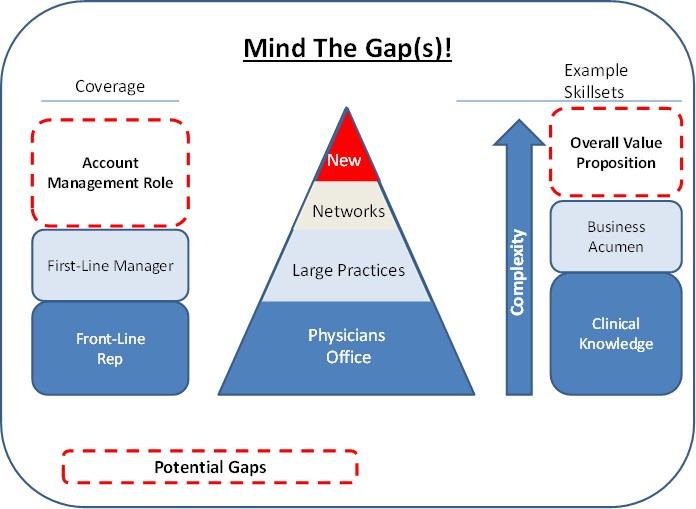Executing a Comprehensive Key Account Strategy

The need for account management solutions in today’s ever-evolving health care landscape seems undeniable. However, simply deploying Key Account Managers (KAMs) to call on your large, complicated customers does not, in isolation, result in sustainable value creation. In fact, a poor deployment creates disruption and frustration that results in net value destruction rather than gain. Currently there is a proliferation of types of KAM roles in the Pharmaceutical Industry beyond the traditional roles found in the Managed Care / Payer environment as companies search for the best approach to meet the needs of increasingly sophisticated and complex customers and buying strategies. How can you ensure your investment in the KAM role pays off? Luckily, other industries have spent decades solving this very same problem. Based on our experience helping some of these clients with this change (from inception through execution), we have identified four key attributes to successfully executing a key account strategy:
1. It’s a journey…not a project:
News Flash: Don’t treat this like just another internal project. Pharmaceutical companies spool up many, many internal projects. We’re seeing KAM programs starting to fall prey to the “internal project” treatment. This can have terrible consequences, including lack of clear objectives and accountability. Anyone not actively engaged will see it as someone else’s job to do. Even those directly involved find ways to get “off the hook” when it gets difficult. To do KAM programs well you must take the time to educate cross-functional leadership on the importance and benefits of the key account management program. This means moving beyond the walls of the commercial sales organization to include all of the wrap-around support functions such as Legal, Finance, and even IT. Set clear objectives and ownership. Make the execution of a key account strategy an organizational priority, not simply an internal project deadline.
2. It’s disruptive…and that’s OK.
News Flash: Key account programs are, by their very nature, cross-functional. The fact is, organizational silos are alive and well in most, if not all, pharmaceutical companies. That means implementing a KAM program effectively will necessarily cause disruption. Breaking down traditional barriers between marketing and sales or across different sales divisions requires visible leadership and vocal buy-in at the highest levels of the organization (i.e., where the silos meet). Normally, a key rationale for change stems from the inability of current rep calls to meet the needs of the customer. Effective KAM programs often involve changing rep account assignments and customer relationships. These changes are in the best interest of the customer, your business and the front line rep’s success. Be sure to invest the time and effort needed to develop a detailed transition plan for your impacted customers and your reps.
3. It’s complicated…deal with it.
News Flash: You are likely not equipped to execute on a Key Account strategy. Well-executed account management looks seamless to the customer. The reality for most pharmaceutical companies is that all of your core sales programs — job definitions, competency models, training, territory designs, systems, data definitions, reporting and incentive plans — were created for a physician-first environment. Therefore, it takes a substantial, and often “brute force,” behind-the-scenes effort to orchestrate internal resources around the needs of a complex customer. Workarounds frequently exist to account for the needs of “one off” job roles such as Hospital KAMs or Managed Care AMs. You must recognize and address the gaps and the need for systemic change in each of these areas. Your current workarounds are simply not scalable or sustainable.

4. It’s necessary…you cannot avoid it.
News Flash: Your customers will demand it. Emerging stakeholders requiring Key Account coverage will remain a fixture within the health care industry for years to come. Even therapeutic areas less impacted to date by such things as pathways will come under greater pressure to justify pricing and ensure differentiated patient outcomes. Over time, this customer segment will become more the norm than the exception. The opportunity cost of inaction more than justifies investment in a comprehensive key account strategy.
Now for the good news: Since executing on a Key Account strategy is a journey, not an event, set your gaze on the horizon and lay out a plan with anticipated timing, resources and milestones that moves your organization in the desired direction. Do not be afraid to try (and fail) at different models for different selling environments. Celebrate successes along the way and learn what works and what does not work.

Learn More
And, learn from those who have gone before you. Alexander Group has assisted many companies through this transition. Learn more about how Alexander Group assists clients successfully execute on a Key Account strategy.
